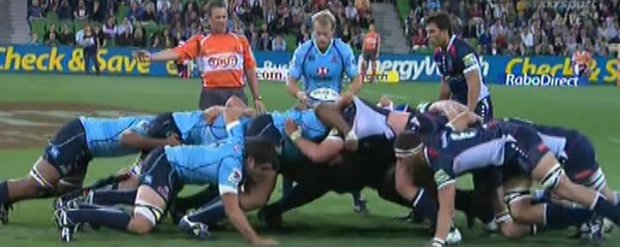Last week I analysed the Rebels’ scrum, including a review of the correct techniques for props when scrummaging — click here if you missed it. This week I’m going to look at the importance of the middle row.
The middle row consists of the two locks and the two flankers. The props are the foundation of your scrum and act as the conduit to transfer the drive coming from the middle row into the opposition. If your props have the wrong body shape and body height at the point of engagement, the drive from the middle row will be wasted.
Importantly, the front row and the middle row have to work together, at the same height and on the same plane. Ideally you want that plane to be horizontal so that the coordinated drive goes straight through to the opposition.
The starting point for any pack is to understand how the forces in a scrum work before they can begin making improvements. The video below shows examples of teams getting it right and how even international packs often get it wrong.
[youtube id=”Nq4xkW80ElA” width=”600″ height=”350″]
The drive in a scrum comes from the whole middle row, not just the locks. When you see flankers just hanging off the side of the scrum as the packs engage and then popping their heads up ready to break early, you can be almost certain that their team’s scrum isn’t functioning properly.
Next week I’ll show you why the flankers form such a vital part of the middle row’s ability to generate drive and I’ll also look at the scrummaging role of the number eight.


